How to Create the Perfect Home Coffee Bar on Any Budget
Creating a home coffee bar is not merely about brewing coffee; it's about crafting a personal experience that combines quality, aesthetics, and convenience. Whether you're a casual coffee drinker or a dedicated enthusiast, setting up a coffee station at home can elevate your daily routine and impress guests. This guide will walk you through the essential components of a home coffee bar, from choosing the right equipment to selecting the perfect beans, all while accommodating any budget.
The Essential Components of a Home Coffee Bar
Setting up a home coffee bar involves several key components that contribute to both functionality and style. Each element plays a vital role in the overall coffee experience.
Equipment and Tools
Investing in the right equipment is crucial for brewing quality coffee. Here are some essential tools to consider:
-
Coffee Maker: Depending on your preference, you can choose from a variety of coffee makers, including automated coffee makers, drip machines, and espresso machines. Automated coffee makers offer convenience, while manual options like French presses and pour-over devices allow for greater control over the brewing process.
-
Grinder: Freshly ground coffee beans are essential for optimal flavor. A burr grinder is recommended for its ability to produce a consistent grind size, which enhances extraction during brewing.
-
Scale: Precision is key in coffee brewing. A digital scale will help you measure coffee and water accurately, ensuring a balanced cup every time.
-
Kettle: If you opt for pour-over coffee, a gooseneck kettle provides better control over pouring, which is essential for achieving an even extraction.
Coffee Selection
The choice of coffee beans can make or break your home coffee experience. Here are some tips for selecting the right beans:
-
Single-Origin vs. Blends: Single-origin coffees come from a specific region and often showcase unique flavors, while blends combine beans from various regions to create a balanced profile. Experiment with both to discover your preference.
-
Roast Level: Light roasts tend to have brighter acidity and more pronounced flavors, while dark roasts offer a bolder, richer taste. Medium roasts often strike a balance between the two.
-
Freshness: Always opt for freshly roasted beans, as coffee loses its flavor quickly after roasting. Look for local roasters or consider buying directly from farms if possible.

Designing Your Home Coffee Bar
A well-designed coffee bar not only enhances functionality but also adds aesthetic appeal to your space. Here are some design considerations:
Space Allocation
Determining the right location for your coffee bar is essential. Here are some factors to consider:
-
Accessibility: Choose a spot that is easily accessible, preferably near your kitchen or dining area. This will make it convenient for daily use and entertaining guests.
-
Counter Space: Ensure you have enough counter space to accommodate your equipment, ingredients, and accessories without feeling cluttered.
Aesthetic Considerations
The visual appeal of your coffee bar can be enhanced through thoughtful design choices:
-
Color Scheme: Select colors that complement your existing decor. Neutral tones can create a calming atmosphere, while vibrant colors can add a pop of energy.
-
Storage Solutions: Use stylish containers for your coffee beans, filters, and utensils. Consider open shelving or decorative cabinets to display your collection of coffee gear.
-
Personal Touches: Incorporate elements that reflect your personality, such as artwork, plants, or unique mugs. These details can make your coffee bar feel more inviting.
The Ultimate Guide to Pour-Over Coffee at Home
Pour-over coffee is a popular brewing method that allows for precise control over the brewing process, resulting in a clean and flavorful cup. Here’s how to master it:
Equipment Needed for Pour-Over
To successfully brew pour-over coffee, you will need:
-
Pour-Over Brewer: Devices like the Hario V60 or Chemex are great options for pour-over brewing. They come in various materials, including glass, ceramic, and plastic.
-
Filters: Paper filters are commonly used, but metal filters can provide a different taste experience. Ensure the filter type matches your brewer.
-
Kettle: As mentioned earlier, a gooseneck kettle is ideal for pour-over, allowing for controlled pouring.
Brewing Process
Follow these steps to brew a perfect cup of pour-over coffee:
-
Measure Coffee and Water: A general guideline is to use a ratio of 1:15 (1 gram of coffee to 15 grams of water). Adjust based on your taste preference.
-
Boil Water: Heat water to about 200°F (93°C). Let it cool for about 30 seconds after boiling.
-
Bloom the Coffee: Pour a small amount of water over the grounds to saturate them, allowing them to bloom for about 30 seconds. This releases carbon dioxide and enhances flavor extraction.
-
Pour Water: Slowly pour the remaining water in a circular motion, avoiding the edges of the filter. This ensures even extraction.
-
Enjoy: Allow the coffee to drip completely, then serve in your favorite mug.
Common Mistakes to Avoid in Home Coffee Brewing
Even seasoned coffee drinkers can make mistakes when brewing at home. Here are some common pitfalls and how to avoid them:
-
Using Stale Beans: Always use freshly roasted beans. Check the roast date and aim to use them within a few weeks of roasting.
-
Incorrect Grind Size: Different brewing methods require different grind sizes. A French press needs a coarse grind, while espresso requires a fine grind. Using the wrong size can lead to over-extraction or under-extraction.
-
Ignoring Water Quality: The water you use can significantly affect the taste of your coffee. Always use filtered or bottled water to avoid off-flavors from tap water.
-
Overlooking Cleaning: Regularly clean your coffee equipment to prevent oils and residues from affecting the flavor of your brews.
Budget-Friendly Tips for Your Home Coffee Bar
Creating a home coffee bar doesn't have to break the bank. Here are some budget-friendly tips:
-
Start Small: Begin with the essentials and gradually expand your collection as your budget allows. A good grinder and a manual brewing method can provide quality coffee without a large investment.
-
DIY Storage Solutions: Use repurposed jars or containers for storing beans and accessories. This can save money and add a unique touch to your coffee bar.
-
Shop Sales: Keep an eye out for sales or discounts on coffee equipment and beans. Many local roasters offer promotions, especially for new customers.
Elevate Your Home Coffee Experience with Ratio Coffee
Setting up a home coffee bar is an exciting endeavor that allows you to enjoy quality coffee in the comfort of your home. By investing in the right equipment, selecting quality beans, and designing an inviting space, you can create a coffee experience that rivals your favorite café. Ratio Coffee provides exceptional automated coffee makers that blend style with functionality, making it easier for you to achieve barista-quality brews at home.
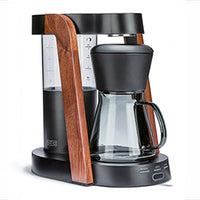 Ratio Eight S2
Ratio Eight S2
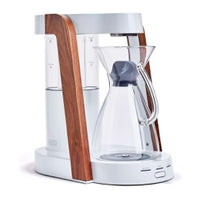 Ratio Eight Original
Ratio Eight Original
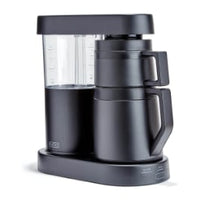 Ratio Six
Ratio Six
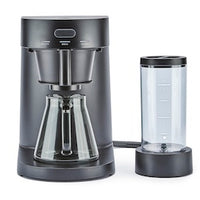 Ratio Four
Ratio Four
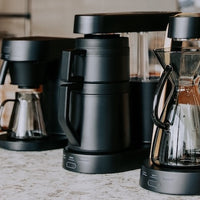 Compare Machines
Compare Machines






